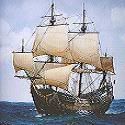Scientific origins
Though living lemur species are only found in Madagascar and several surrounding islands, the biogeography of extinct lemurs extends from Pakistan to Malaysia. The wide range of the animals inspired the name Lemuria, which was coined in 1864 by the zoologist Philip Sclater in an article "The Mammals of Madagascar" in The Quarterly Journal of Science. Puzzled by the presence of fossil lemurs in both Madagascar and India, but not in Africa nor the Middle East, Sclater proposed that Madagascar and India had once been part of a larger continent.
Sclater's theory was hardly unusual for his time. The acceptance of Darwinism led scientists to seek to trace the diffusion of species from their points of evolutionary origin. Prior to the acceptance of continental drift, biologists frequently postulated submerged land masses in order to account for populations of land-based species now separated by barriers of water. Similarly, geologists tried to account for striking resemblances of rock formations on different continents. The first systematic attempt was made by Melchior Neumayr in his book Erdgeschichte in 1887. Many hypothetical submerged land bridges and continents were proposed during the 19th century, in order to account for the present distribution of species.
After gaining some acceptance within the scientific community, the concept of Lemuria began to appear in the works of other scholars. Ernst Haeckel, a German Darwinian taxonomist, proposed Lemuria as an explanation for the absence of "missing link" fossil records. According to another source, Haeckel put forward this thesis prior to Sclater (but without using the name 'Lemuria'). Locating the origins of the human species on this lost continent, he claimed the fossil record could not be found because it had sunk beneath the sea.
Other scientists hypothesized that Lemuria had extended across parts of the Pacific oceans, seeking to explain distributions of species across Asia and the Americas.
Superseded
The Lemuria theory disappeared completely from conventional scientific consideration after the theories of plate tectonics and continental drift were accepted by the larger scientific community. According to the theory of plate tectonics (now the only accepted paradigm in geology), Madagascar and India were indeed once part of the same landmass (thus accounting for geological resemblances), but plate movement caused India to break away millions of years ago, and move to its present location. The original landmass broke apart - it did not sink beneath sea level.
In 1999, drilling by the JOIDES Resolution research vessel in the Indian Ocean discovered evidence that a large island, the Kerguelen Plateau, was submerged about 20 million years ago by rising sea levels. Samples showed pollen and fragments of wood in a 90 million-year-old sediment. Although this discovery might encourage scholars to expect similarities in dinosaur fossil evidence, and may contribute to understanding the breakup of the Indian and Australian land masses, it does not support the concept of Lemuria as a land bridge for mammals.
Within Blavatsky's complex cosmology, which includes seven "Root Races", Lemuria was occupied by the "Third Root Race", described as about seven foot tall, sexually hermaphroditic, egg-laying, mentally undeveloped and spiritually more pure than the following "Root Races". Before the coming of the Lemurians, the second "Root Race" is said to have dwelled in Hyperborea. After the subsequent creation of mammals, Mme Blavatsky revealed to her readers, some Lemurians turned to bestiality. The gods, aghast at the behavior of these "mindless" men, sank Lemuria into the ocean and created a "Fourth Root Race"—endowed with intellect—on Atlantis.
One of the most elaborate accounts of lost continents was given by the later theosophical author William Scott Elliott. The English theosophist said he received his knowledge from the Theosophical Masters by "astral clairvoyance." In 1896, in "The Story of Atlantis & The Lost Lemuria", he described the continent of Lemuria as stretching from the east coast of Africa across the Indian and the Pacific Oceans.
James Bramwell described Lemuria in his book, Lost Atlantis, as “a continent that occupied a large part of what is now the South Pacific Ocean.” Quoting Story of Atlantis, by William Scott-Elliott; “Atlantis, according to Scott-Elliott’s first map, which shows it 1,000,000 years ago, extended ‘from a point a few degrees east of Iceland to about the site now occupied by Rio de Janeiro in South America. Embracing Texas and the Gulf of Mexico, the Southern and Eastern states of America, up to and including Labrador, it stretched across the ocean to our own islands, - Scotland and Ireland… embraced Brazil and the whole stretch of ocean across to the African Gold Coast.”
Bramwell described the people of Lemuria in detail and attributed them with being one of the “root-races of humanity.” According to Bramwell, Lemurians are the ascendants of the Altlanteans, who survived the period “of the general racial decadence which affected the Lemurians in the last stages of their evolution.” From “a select division of” the Atlanteans - after their promotion to decadence - Bramwell claims the Aryan race arose. “Lemurians, Atlanteans, and Aryans are root-races of humanity,” according to Bramwell.
James Churchward, another prolific writer on the theme of lost lands, identified Lemuria with Mu.
Reflections
[Thursday, December 04, 2008
|
0
comments
]


































0 comments
Post a Comment